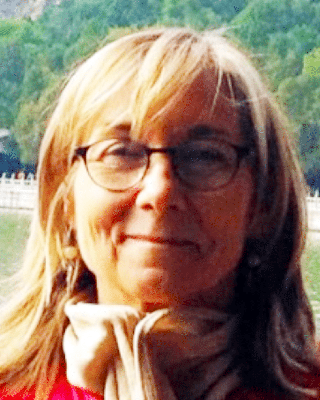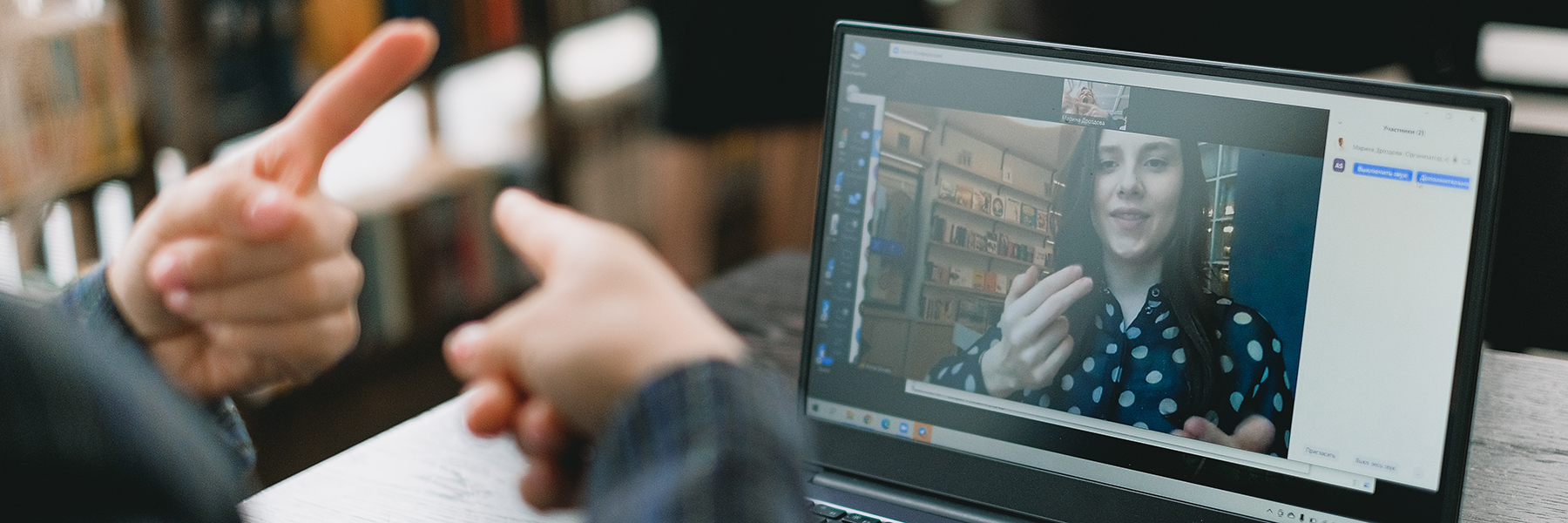By Dominique Scheffel-Dunand
French Studies Associate Professor Dominique Scheffel-Dunand has written an insightful essay that explores the future of teaching and learning from a variety of perspectives and offers a futuristic view of the university in 2040.
When recently asked to reflect on the future of teaching and learning, particularly for the next 20 years, my brain right away traveled to the time when a famous Canadian academic, Marshall McLuhan, poetically coined in the 60’s the ideas of “Classrooms Without Walls” and the “Global Village.”

“We have to realize that more instruction is going on outside the classroom, many times more every minute of the day than goes on inside the classroom. That is, the amount of information that is embedded in young minds per minute outside the classroom far exceeds anything that happens inside the classroom in just quantitative terms now.” – McLuhan, M. (1966, April). Electronics & the psychic drop-out. THIS Magazine is about SCHOOLS. p. 38.
McLuhan variously labelled his alternatives to classroom as “classroom without walls,” “city as classroom” and the “little round schoolhouse.” He observed in the sixties, that built structures and spaces dictate how we work and interact in them. The educational settings then were catching up and considering ways of taking learning out of classrooms with radio and TV broadcasts, fiction, cinema and journalism to complement information and knowledge transferred in class settings s. Our York University students in 2022 can experience these explorations of classroom without walls and their current expanded meanings in work-related learning environments, in experiential learning, in curricula that foster acquisition of intercultural competencies. The flipped classroom approach, the recent release of open MOOCS, technology-enhanced class settings blurring what is home and school life and, of course, learning frameworks supported by AI are all today common practices and a new reality for instructors and learners alike.
With the arrival of print around 1500, Erasmus and humanist colleagues understood what had to be done in the classroom to adapt from oral literacy to written literacy. The arrival of the Gutenberg press impacted on procedures in the 16th century classroom. For McLuhan, print evoked the walls of the classroom, the movie and TV evoked the classroom without walls. Furthermore, photography, videos and social narratives were introduced as art, as knowledge rather than as news, and documentary books and videos crafted new literacies in communicational models used for reusing data and knowledge in course kits, textbooks and learning platforms such as eClass. But reinventing educational narratives in the context of presentism requires us to reshape what we have known during the linear evolution of education. Probing, constructing an argument based on the relationship between causes and effects requires retooling!
At York, like in other post-secondary institutions, academic communities have embarked in this journey of aligning presentism with education. For example, in initiatives such as the cross-faculty C4 project, in the explorations of Globally Networked Learning that foster global comparative and collaborative learning or in projects embedding UN SDGs in research-action activities. Moreover, how to deal with presentism in today’s classroom is formally discussed in pan-university working groups to map communication and educational strategies that invite exchanges on “Openness, “Accessibility” and “Equity” in the classroom. Reflections and outputs from these groups are to inform the drafting of new policies on teaching and learning that can inspire peers and learners alike to embrace change. The principles of Openness are shifting learners’ passive or active towards new educational practices that require searching of data, information and knowledge outside the classroom walls; foster an understanding of tools and platforms inspired from the semantic web; and contributing to networked repositories aggregating original content and feedback/assessment on content simultaneously such as in OER Commons, eCampus and Pavillon.
How can one further imagine the impact of presentism in the classroom? How can we collectively be prescient to craft teaching frameworks and learning pathways that (i) mimic, support and enhance our multi-tasking brains incapable any longer of storing information and knowledge without relying on AI and repositories to curate data and thoughts while (ii) expressing our consciousness and deep understanding of the multi-faceted worlds we live in? First, young people are the most adaptable to innovations in teaching and learning because they are less likely to mourn what they never knew. They are already getting part of their knowledge through real-time streams to live multiple realities. They are contributing and reacting to other’s opinion on platforms such as Discord, Tik Tok to express their concerns, aspirations and understandings of the multiple worlds they live in here and there. They are consuming networked and remote knowledge that can be packaged into accessible OER freely 24/7.
Instructors and learners at any stage of the learning continuum are already engaging with these practices, pioneering, creatively and as experts, the re-use, assembling and reassembling, reshaping or transformation of educational content, narratives and knowledges edited simultaneously within and outside the classroom walls at a global level. Giving learners centralized access to a storage medium such as repositories aggregating content from multiple educational institutions, offering them the tools and competencies to master their searching and researching capabilities to find relevant resources that complement their understanding of complex concepts, thoughts and case studies will diversify and augment their ways of knowing.
When knowledge is rendered instantly accessible via Google and iTunes, the aggregated data becomes a single layer deep. The journey disappears and all knowledge is brought into the present tense. Temporal compression takes the form of a mash up of previous knowledge into new knowledge. The time compression that once allowed a learner to leverage his/her experience is now transferred to a machine. When there is no linear time, no narrative to explain why phenomena are the way they are, no time to analyze causes and effects, no time for doing and seeing results, we are left to make sense of things by making connections. The ease with which we can make these links of connectivity between people and things is matched only by our need to find patterns with no enduring story line, patterns generated by the assistance of AI and machines that compute data about students’ learning styles and the challenges they encounter in concept recognition and acquisition. We no longer have a history of knowledge on a discipline but a map of this knowledge and dashboards that allow us to fragment the data visualization that we render in bits of knowledge. A picture exists in the static moment and content is created through links and the whole world of knowledge begins to look like a space where each piece reflects the whole.
Storing ideas, knowledge, data, in relationship to other thoughts and knowledge refreshes and creates new neural pathways allowing multi-faceted problems in a discipline to be intersected to adjacent problems and responses in other disciplines or by the public at large. Further iterations of learning spaces like C4 and GNL along the academic progression continuum of our students will anchor reflective critical thinking and the cross-pollination of ideas via dialogues for the co-creation of knowledge. Storing these educational objects for further rejuvenation by learners based on their learning experiences or discussions in networked repositories will allow assessment of co-created teaching/learning resources by external experts and communities of practice, all collaborating to enhance teaching and learning practices across institutions and consortia.
But, continuing our pursuits with the timeless educational practices that have encouraged articulation of ideas and arguments and the art of the demonstration we can synchronously illustrate how linearity has been used to transform societies through time and reintroduce the relevancy of “slow and deep” in learning for certain tasks that require the mastery of literacies that intersect orality, alpha numerical writing and the computational to express solutions to complex 21st century problems. By pursuing our journey with timeless educational practices that craft foundations in learning we can help our students adapt to new temporal diversity and succeed as learners and engaged citizens.
The future of teaching and learning encourages instructors and learners to reflect now on the competencies, skills, literacies and knowledge the workplace and societies the world in 2040 will require. They have to be ethnographers, historians and stewards of their own learning journeys in long-life learning Our new hyperconnected fractal reality is quite incompatible with the way most educational or academic institutions still operate today where teaching, learning, research and service are based on a cycle of planning, feedback and internal policy making. To open these practices, we need to r on how the flow of information/discussions and feedback are altering our consciousness of societal changes and consequently our educational frameworks, and policies. We need to take stock of how EDI, Indigeneity and technologies are affecting our ways of being human in a compressed digital time frame. The lateral thinking could be misleading as it may draw on premature connections once can make from data collected by instructors, students, leaders and machines. Pattern recognition and timelines brought by presentism is adverse to linear and analytical thinking but addressing the challenges they bring to timeless educational practices as we knew them may guide us to where we need to be by 2040!


